Operations Report – January 31st
Crew 240 Operations Report 31-01-2022
SOL: 0
Name of person filing report: François Vinet
Non-nominal systems: Heater
Notes on non-nominal systems: The temperature has dropped a lot from the night in the upper desk (3am : 61°F, 6am : 57°F). Atila checked the thermostat and switched to FAN:AUTO (it wasn’t the case during the night). Filter was also replaced.
ROVERS
Spirit rover used: yes
Hours: 153.7
Beginning charge: 100%
Ending charge: 76%
Currently charging: yes
Opportunity rover used: yes
Hours: 82.9
Beginning charge: 100%
Ending charge: 70%
Currently charging: yes
Curiosity rover used: yes
Hours: 165.4
Beginning charge: 100%
Ending charge: 70%
Currently charging: yes
Perseverance rover used: No
Hours: 226.5
Beginning charge: NA
Ending charge: 100%
Currently charging: NA
General notes and comments: NA
Summary of Hab operations: Some crew members felt discomfort during the night because of dusty air. The air filter has been changed. Water filter next to the loft tank has also been changed.
WATER USE: 11 gallons
Water (static tank): 470 gallons
Water (loft tank): 24 gallons
Water Meter: 0155318.2 units
Static to Loft Pump used : yes
Static tank pipe heater (on or off): on
Static tank heater (On or off): on
Toilet tank emptied: no
Summary of internet: NA
Summary of suits and radios: NA
Summary of GreenHab operations:
WATER USE: 10 gallons
Heater: Off
Supplemental light: Off
Harvest: Cherry tomatoes (150g)
Questions:
– Should the supplemental light be turned on during our weeks at the MDRS considering the sun sets early?
– If the GreenHab is at 80°F at 7PM should the heater be turned on considering the temperature will likely drop even lower overnight?
Summary of ScienceDome operations:
Dual split: Off
SOC : 41% at 6.45pm
Summary of RAM operations: The batteries of the Combustible Gas Meter have been changed (3 AAA batteries).
Summary of any observatory issues: The computer in the observatory is not working (problem at startup). Peter Detterline has been contacted by the crew astronomer on his personal gmail address. The main computer mouse is also broken (there is no left key anymore).
Summary of health and safety issues: There is a problem in the insulation of the commander bedroom: the glass wool above the headboard is apparent. Photos can be provided.
Questions, concerns and requests to Mission Support: one non-burnable trash is waiting for pickup in the rear airlock. Thank you!
– I am not sure what is the dual split in the Science Dome. Is it the white fan to the right of the battery management device ? Where can I check its state ?
Journalist Report – January 31st
Crew 240 Journalist Report 31Jan2022
Author : Pierre Fabre
This day surely was a particular day, both confusing and exciting.
First, let me introduce myself briefly – don’t worry, my crewmates will be introduced properly later on. I’m Pierre, Crew 240’s Journalist, and for three weeks I will keep you updated on our mission on Mars.
Yes, you read that well, for three weeks we will perform a Martian mission. But let’s start by the beginning of that incredible day.
This morning we woke up in the Mars Desert Research Station, in the middle of nowhere, in an environment that looks like Mars, but in reality, is still on Earth. We will only be on Mars in the afternoon after our training is complete and the airlocks are locked.
First, it is 6:45 in the morning and we need to meet our Health and Safety Officer Julie at the lower deck to do our first workout as a crew – those morning workouts will be our routine during those three weeks. This first bit of exercise was hard for some members of the crew but it was fun and good for team building.
After our breakfast, Atila, the Assistant Director, came to visit us in order to finish up our training which started yesterday. We talked about the philosophy of the simulation, the history of MDRS, and how everything in the station works.
We tried on our spacesuit and went for a walk around the station to test them. It surely was exciting to walk in a place that looks so much like Mars, in a spacesuit, communicating only by radio with the noise of the air conditioning system in the helmet. But in reality, it is just a taste of what would be our first real EVA on Sol 1, on Mars. We can’t wait to do it!
Atila showed us how to properly drive the rovers at MDRS. Fun fact: they’re named after real rovers that went to Mars: Perseverance, Opportunity, Spirit, Curiosity… How cool is that? We went to Galileo Road in the cold of the Utah Desert. Driving a rover is not complicated, but with a spacesuit it will surely be a challenge, which we will discover tomorrow!
Our trainer Atila then left us and we had our last lunch on Earth, which was actually confusing since we already started to eat Martian food – more about Martian food in another report. After this lunch we went out of the station through the front airlock and we took the classic picture every crew takes before beginning the sim. This was the last time we were outside of the station without a spacesuit, the last time feeling the fresh air on our skin and in our lungs. With a lot of emotion we stepped into the front airlock and closed the door. The sim had begun.
This moment was all the more emotional because our botanist, and friend, Raphaël Dehont, spent two years of hard work preparing this mission with us, but couldn’t make it to the USA due to visa issues. This was a heart-breaking event and we miss him a lot on this Sol 0. In order to have him somehow with us during those three weeks, we took a small plushie as a mascot for him.
Now that the sim had begun, we all started to work on the tasks defined by our roles and on our experiments. Some stayed at the Hab and others started to fill the other buildings of the station: Science Dome, GreenHab, RAM (the names are cool, but not even as much as the rooms themselves).
Everyone starts to feel more and more at home in the station. At the time of writing this, we are all writing our reports for Mission Support. We’ll then have dinner, the first on Mars, and we’ll be off to bed. This can be seen as a very earthly routine, except we are on Mars, and tomorrow we will perform our first EVA and step for the first time on Martian soil.
Sol Summary – January 31st
Sol Activity Summary: Morning was spent with Atila, finalizing the steps required for us to safely and confidently perform EVAs. Following a very substantial lunch, we took our final pictures outside and entered sim mid-afternoon. During the following time, we continued setting up various science experiments and began getting used to life in sim.
Look Ahead Plan: Planning for and performing our first EVAs in order to get our footing outside.
Anomalies in work: Nothing of note.
Weather: Slightly overcast, biting cold in the morning.
Crew Physical Status: No health issues, a little fatigue for some
EVA: None performed besides outside training with Atila
Reports to be filed: Operations Report, Health and Safety Officer’s report (with temperatures), Pictures, Journalist’s report, Sol Summary, EVA requests (2 if possible)
Support Requested: We have taken pictures of the visible insulation mentioned previously and can supply them if need be.
Final Mission Summary – Crew 226
Mission Summary Crew 226- Team Colombia
Description
From January 16th to the 30th, 2022, the second Colombian Mars Simulation Analog Mission took place in the MDRS. The team got integrated by Colombian students, researchers, and professionals in the areas of Science, Engineering, and Technology strongly related to the aerospace field. Among others, some challenges the mission crew encountered were to go through confinement and isolation in this habitat for 15 days, on a diet based on dehydrated food, and limitations on the use of water and communications.
The Colombian main crew, Crew 226, includes:
- Felipe Torres, Mechanical Engineer from Universidad Nacional de Colombiawith the position of Crew Scientist.
- Carlos Salazar, Mechatronic Engineer candidate for a master’s degree in Engineering– with the position of Crew Engineer, both from the Universidad Nacional de Colombia.
- Cristian Acosta, Aerospace engineer for Blue Origin, with the role of Health and Security Officer.
- Maria Paula Bustos, Geologist and Master’s student in Geodesy and Geoinformation Science -Technische Universität Berlin, with the position of Greenhab Officer and Crew Geologist.
- Yael Méndez, Microbiologist, from Universidad de los Andes and Master’s student in Geosciences from Universidad Nacional de Colombia with the position of commander.
The Crew Organizer is David Mateus, a Mechatronic Engineer and Master’s student in Space Studies at the University of North Dakota.
The main line of work is related specifically to the areas of expertise of the crewmembers, developing projects following years of studies and preparation, and, as it usually happens in space exploration, collaboration with teams left back on Earth. The second line is about the interest in developing outreach projects in Colombia. Our country does not have a well-developed space field, and these kinds of opportunities provide a platform to develop several types of outreach activities, from general to specialized public.
Mission patch and personal photos

EVA Summary
The crew executed a total of 8 EVAs during the 2 weeks period at the MDRS. Appendix 1

Operations Summary
Water consumption was monitored daily as well as the status of charge of batteries powered by the solar panel system. All mechanisms functioned nominally throughout our mission except for the energy system which controllers failed one day before ending simulation.

Health and Safety Summary
The overall health for crew 226 during the mission was good. No one developed any severe illness or injuries while at MDRS which was always great to see. Nonetheless, the following symptoms developed among the majority of the crew members at different times: coughing, sneezing, headaches, chills, sore throats, and acid reflux. Aside from the acid reflux, these symptoms were manageable with specific vitamins and medicines and never worsened after appearing. The only minor injury sustained by a crew member was that of the rolled ankle which saw inflammation. But with rest, pills, and creams, both the inflammation and pain went away and recovery was speedy. Another note was that of personal hygiene and although the crew has not taken a shower in 12 days, they have been very good with using facial wipes and other personal hygiene products to stay relatively clean throughout the mission.
Green Hab Summary
The green-hab was received on the 18th of January 2022. Several kinds of plants such as cherry tomatoes, herbs, carrots, lettuce, micro-greens, peppers, and cucumbers were already planted on our arrival. During the two-week rotation we harvested the following:

Additionally, the following was planted: lettuce, microgreens, chives, lemon balm, cilantro, and red bunching onion. Some of them are already growing and are expected to be harvested in the following weeks.
Research results
Carlos SALAZAR (Crew Engineer)
Project Title: 3D Mapping for rovers using point cloud stitching and Kinect
Description: Build a system that gets point clouds taken with a 3D camera on an element like the Kinect sensor and joins them together to make a 3D map of the environment and locate itself in it. The following tasks have been defined:
- Get the points clouds using Kinect and point cloud library
- Process the point clouds taken
- Check and validate point cloud stitching algorithms
- Check and validate point cloud matching algorithms
- Integrate the developed modules
Methodology: The method of research selected for this project is going to be experimental, the samples taken with the sensor will be taken mainly in indoor areas or in a controlled environment, a portion of the solution will use methods from the point cloud library PCL using example point clouds. The idea is to check if those methods work with our samples and how a correct integration of all the modules can be made, identifying its weak points to propose and evaluate ways to improve them.
Preliminary Results: A lot of pictures for structure from motion were taken during an EVA, some processing is needed to turn them into point clouds. The Kinect was used in the hab and the samples will be used to test the algorithms that will be developed later.
Maria Paula BUSTOS (Crew Green Hab Officer)
Project Title: Classical music and the growth of plants at MDRS
Description: Evaluate the growth of cherry tomatoes and mint plants in the station under the sound of the classical music of Johan Sebastian Bach by exposing these plants daily to Bach’s songs and comparing them to a control group that is not going to be exposed to this music, and determine if Bach songs have an impact in the rate of growth of these plants in the MDRS Green-hab.
Methodology: 1) Select two cherry plants and two mint plants that were cultivated at the same time and exposed to the same conditions during the last weeks and measure the size of its leaves and the number of fruits and flowers they have. 2) Expose daily for three hours one mint plant and one cherry plant to Bach songs. 3) Measure daily the size of the leaves and the number of fruits and flowers of each of the plants exposed to classical music and the ones not exposed (control group). 4) compare results and determine if the exposure to Bach classical music affects the growth of tomato cherry and mint plants in the research station.
Results: We performed experiments in which we daily exposed two cherry tomato plants to Bach’s classical music for three hours. We exposed one of the two plants (Plant A) to the music at a distance of 1cm, while the other one (Plant B) was exposed to the music 7 meters away. After two weeks we found out that plant A, grew less in terms of new fruits and flowers compared to plant B. We cannot conclude that music was the only factor that could have influenced the growth of the plant since there were also a lot of insects that infested plant A. Further research with more controlled parameters should be performed in order to have concluding remarks regarding music exposure and plant growth.
Felipe TORRES (Crew Scientist)
Project Title: Feasibility of using bo-PET films to build an emergency Space Tent.
Description: Analysis of the insulating efficiency of a biaxially oriented polyethylene terephthalate (bo-PET) film in order to determine the feasibility of building an emergency space tent for EVAs in Mars and other aerospace applications using this material.
Methodology: Take measurements of Humidity and Temperature using a DHT11 sensor and Arduino. These measurements will be taken on different control volumes outdoors both with and without the thermal insulation provided by our material. To consider meteorological factors, these measurements will be taken at different times of the day and at different locations around the station. The insulative material will then be tested on different crew members, by providing a protective layer with the material and the body temperature will be measured with and without this insulative layer.
Results: Bo-Pet films provide considerable protection against critical temperature conditions. At high temperatures, the material is able to reduce temperature inside the control volume due to its high light reflectivity, avoiding temperature to rise considerably. In contrast, at low temperatures, the material maintains heat inside the control volume; while it doesn’t increase temperature, it prevents that the volume reaches extremely low temperatures in the absence of sunlight. In terms of relative humidity, bo-PET film increases the relative humidity inside the control volume, which is convenient for the dry environments found on Mars. Figure 1

Figure 1. Temperature and Relative Humidity measurements with and without insulation.
Yael Natalia MÉNDEZ (Commander)
Project Title: Clays identification through reflectance spectrometry and Raman spectroscopy.
Description: This project seeks to use Mars Desert Research Station (MDRS) to analyze the impact that clay variations have, and recognize their mineralogy through laboratory techniques (reflectance spectrometry and Raman spectroscopy), and compare that with the instruments applied in the perseverance rover.
Methodology: Collect samples of different types of clays found in the MDRS and they will be process in Colombia by Grupo de Caracterización Tecnológica de Minerales at Universidad Nacional de Colombia.
Preliminary Results: Zones’ geological description and lithology recognition, Clay samples collection to be processed in Colombia.

Figure 2. Upper left: Recognition of zone’s lithology. Upper right: Temperature and Humidity measurements. Lower left: Green Hab and music experiments. Lower right: Hab 3D imaging.
Acknowledgments
MDRS Crew 226 wants to acknowledge and thank all the people and institutions that made this possible. It’s been a two-year-long process that required a significant amount of effort from several people. We would like to start by thanking The Mars society, in the head of its president, Dr. Robert Zubrin, as well as Director Dr. Shannon Rupert, and Atila Meszaros, who made us feel safe and welcomed. We would also like to thank all the Capcom officers who were ready to take our reports and comments. And also, all the people behind the scenes working actively to make this possible, but surely helped us make our mission smoother and wonderful.
Appendix 1
Crew Photos – January 28th
Hello Atila and Mission Support Team,
Here we show our daily photos. We share the collages we made for our mission report, some pictures of our lunch, doing some cleaning and the stars.
Best regards,
Carlos Salazar
Crew Engineer crew 226
Journalist Report – January 28th
Journal Report Sol 11 – 28Jan2022
Crew 226
The night sky is a beautiful sight to gaze upon and it was precisely what Cristian and Maria Paula saw late at night early Friday morning. The time was 12:30 am and the temperature was -6° C but that didn’t matter because they could not pass out on the opportunity to witness the Milky Way galaxy. Betelgeuse and the big dipper were some of their favorites to stare upon amongst the millions of other stars visible in the void.
This morning has been a little melancholic. We all are already mesmerized about all the experiences together on Mars.
Today at noon we officially ended our simulation. We started to get ready to get back to Earth, Felipe made some breakfast, the menu: Eggs with Spam, it was good. Then we started checking the SOC level since there was a power issue yesterday and Atila gently asked us to do so. During that time we did some cleaning, commander Yael started writing the mission summary report and asked us to share some info about our projects.
At around 10 am we were all working on the final details of our research results to finish the Mission Summary Report.
After that, Felipe and Maria Paula made lunch, he made a pizza and she made a delicious salad made with ingredients from the green-hab. Felipe also made a chocolate mousse for dessert that is in the freezer right now, I know that it will be delicious.
We watched a soccer match, Colombia vs Peru, for the 2022 Qatar World Cup Qualifiers. We were all super excited because both teams were tied in points and it would be a decisive win. Also, our dear friend Atila is Peruvian so we all had him in our minds during the game. Colombia dominated the game, but we all know it’s not about who dominates the game, it’s about which team scores the most goals… 1-0 win for Peru. Congrats Atila and Sebastian!
We played some thumb war and did some arm wrestling, Cristian is pretty strong!
Later on, we started doing the food inventory and some more cleaning to get the Hab ready and squeaky clean for the next crew rotation.
Bye-bye Mars, until next time…
Sol Summary – Jan 28th
Sol: 11
Summary Title: Goodbye Mars
Author’s name: Yael Méndez- Commander
Mission Status: The entire crew is happy to return to Earth, however, we will all miss living on Mars.
Sol Activity Summary: The crew got up early to prepare the station for the next rotation. We had pizza and salad for lunch to celebrate the end of our simulation.
Look Ahead Plan: Back home.
Anomalies in work: None.
Weather: Sunny in the morning and afternoon.
Crew Physical Status: Nominal
EVA: None
Reports to be filed: Sol Summary, Operations Report, Daily photos, Journalist Report, Crew 226 Food and Supply Inventory, Mission Summary Crew 226
Support Requested: None
Operations Report – January 28th
SOL:11
Name of person filing report: Carlos Salazar
Non-nominal systems: Power System
Notes on non-nominal systems: The power system is working but the batteries do not seem to be charging with solar power, Atila asked us to monitor it during the morning.
Spirit rover used: No
Hours: 153.7
Beginning charge: 100%
Ending charge: 100%
Currently charging: yes
Opportunity rover used: No
Hours: 82.9
Beginning charge: 100%
Ending charge: 100%
Currently charging: Yes
Curiosity rover used: No
Hours: 165.4
Beginning charge: 100%
Ending charge: 100%
Currently charging: yes
Perseverance rover used: no
Hours: 226.5
Beginning charge: 100%
Ending charge: 100%
Currently charging: Yes
General notes and comments: none
Summary of Hab operations:
WATER USE: 30 gallons
Water (static tank): 207 gallons
Water (loft tank): 40 gallons
Water Meter: currently 0155243.5
Static to Loft Pump used – yes
Static tank pipe heater (on or off): on
Static tank heater (on or off) on
Toilet tank emptied: No. It will be done before leaving
Summary of internet: nominal
Summary of suits and radios: nominal
Summary of GreenHab operations:
WATER USE: 11 gallons
Temperature: 100.3°F
Heater: On
Supplemental light: Yes
Harvest: 399g Cherry Tomato, 74g Swiss Chard
Summary of Science Dome operations:
SOC: 81%
Summary of RAM operations: none
Summary of any observatory issues: none
Summary of health and safety issues: none
Questions, concerns and requests to Mission Support: none
Crew Photos
Hello Sebastián and Mission Support Team
Here we share our daily photos, we show today`s dusk, our lunch, a photo of Commander Yael and María Paula, and some pictures we took during EVA.
Best regards,
Carlos Salazar


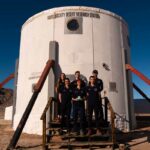
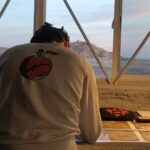
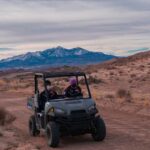
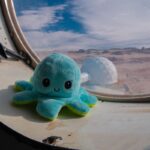
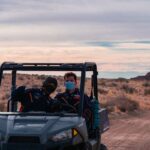
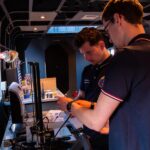


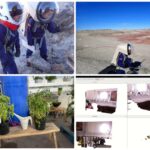
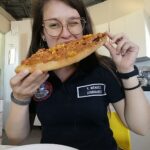
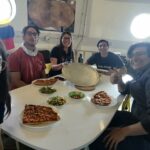
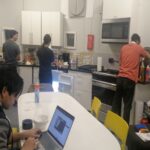
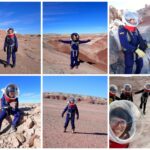
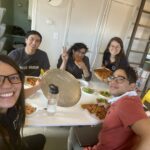
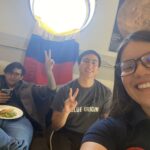
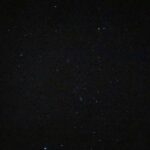

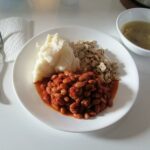
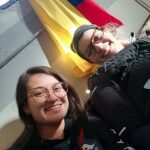
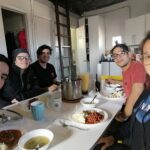
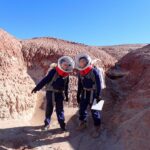
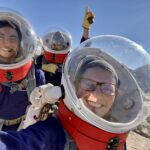
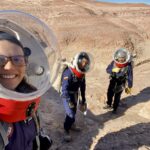
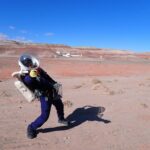
You must be logged in to post a comment.